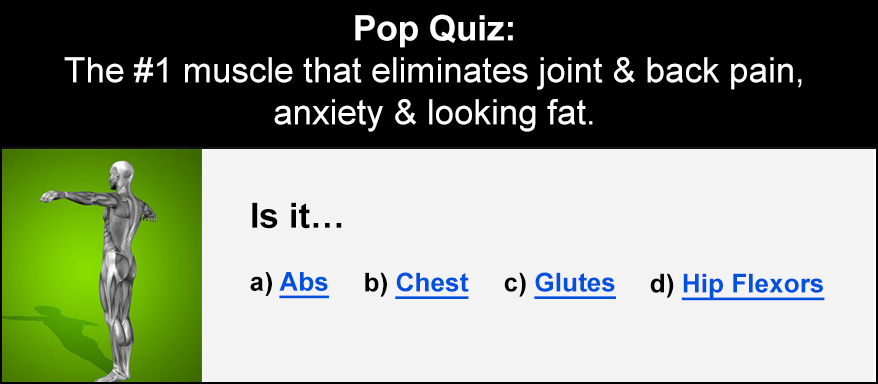
Sciatica is pain that stems from pressure on the nerves through the sciatic nerve. If you’re experiencing radiating pain in the lower body – specifically the back, butt, and into the leg – you’re in the right place.
Sciatica doesn’t need to be surgically intervened with all the time; often, sciatica can be dealt with on your own terms. It’s an uncomfortable condition and it can seriously affect your quality of life, but you can take back control with conservative treatment through exercise in many cases.
Let’s talk sciatica self-management.
Conservative Treatments: What And Why
Conservative treatments are the non-invasive management techniques you’re going to run into with physiotherapy and other practices. It’s about dealing with problems without surgery or drugs; using the body’s own mechanisms for recovery and correction to solve problems.
These are great for sciatica because it’s often chronic and the result of some musculoskeletal dysfunctions. Not every case can be treated conservatively – serious issues need a full medical diagnosis and treatment – but many can.
This is a great set of habits to get into, even if it’s just for pain management and longevity. These are great results and you can get a ton of benefits from exercise and self-treatment. If nothing else, you’re going to have a stronger and healthier back/hips. Not a bad result!
Decompression
One of the short term step you can take to combat sciatica is to address the immediate problems. If you’re experiencing disc compression in the spine – a common cause – you can decompress the spine to provide some immediate relief.
This isn’t a solution to the problem itself, but it does offer an option in the pain management. It’s a good habit to get into since many of the most common activities associated with sciatica are compressive: sitting, lifting weights, or poor posture.
Treating the immediate issues in this way offers you the opportunity to live more comfortably and address the problems yourself. If you’re looking for gentle relief, cat stretches, and the standing hamstring stretch can really help decompress the spine
For those with a little more weight-training experience, the Jefferson curl is an ideal tool for spinal decompression. Equally, hangs from a pull up bar – especially with gentle twisting – can provide serious relief to the spine, connective tissues, and over-active muscles.
Stretching and Flexibility
The reduction of excessive demands on the joints around the hips and spine could be a simple way of relieving some pain. It’s also one of the possible factors in the cause of sciatica, as well as addressing the pain and discomfort symptoms.
Tightness is associated with poor activation and control in muscles like the piriformis and glutes. Weakness and inhibition in these tissues has two problems: the glutes control the stability of the lower spine, and tightness can produce overcompensations in movement that place stress on the back.
Reducing tightness in the glutes is a great place to start – with the pidgeon stretch and piriformis stretches being great starting points. Reducing tightness in the quads and hamstrings can also free up the movement of the hips, so get in those couch stretches and walking toe-touches.
You should follow these up with an effective glute strengthening exercise like the banded clam, banded crab walk, or single-leg glute bridge. These all provide great glute strength and hip-control, which are key factors in reducing sciatica for most people.
The adductors are another contributor to frozen hips, so you should also consider some Kosack squats and straddle stretches just to loosen them off. Fixed-plane machines for the adductors and abductors should also be a part of your regular workouts to combat sciatica.
Dynamic mobility can also be really useful: properly executed inchworms are a great exercise for overall spinal control on-the-move. Equally, the classic bear crawl is an awesome tool for full-body mobility.
Core/LB Control: Roles of Multifidus and the TVA in Spinal Stab
The proper development of core and lower back muscles – as well as control over them – are key players in sciatica. An unstable, poorly-supported spine contributes to a wealth of problems such as facet joint injuries and sciatica itself, by increasing disc instability and degradation.
This is a pretty common outcome in people who don’t stay active. It’s inevitable that strength will degrade as we age, but you can counter-act this process or build a surplus of strength to ensure you stay healthy and stronger for longer.
The development of the core and hip muscles is a topic for a whole article, but at a surface level there are some really good examples. The 8-point plank is one of these, with a focus on stability and actively resisting the urge to let the back go soft.
Equally, leg lifts and back raises are great ways of training the extension/flexion of the spine. They offer strength and control in these two key directions. These are crucial skills for better management of the spine, and it has knock-on benefits for reducing sciatic pain in the long-term.
You should also work on some specific multifidus-building exercise. Glute bridges are proven to be really useful for this purpose, and the frog pump is a way of getting lots of high-quality rep work in for the hips and lower back. Make sure your core is active on all of these movements to reduce pain and ensure proper trunk strength gains.
Lateral Spinal stability
The sideways and rotational movements of the spine are where your back is likely most vulnerable. A lot of debilitating back injuries can be traced to some sort of asymmetrical movement like a twist or jerking single-leg movement.
Sciatica is sensitive this kind of rotational bias, whether it’s in the hips or the core itself. Addressing obliquities and improving your symmetry could be a factor in reducing the symptoms, or at least building resilience to further problems.
Slow, intentional rotations like the side plank twist or wood chop can contribute to improved rotational strength and stability. This should also include oblique training to stabilise the spine laterally and keep weight evenly-distributed across the discs of the spine.
Hanging side crunches can be a good choice if you have the strength, or a lying oblique crunch if not. They should also be long-range movements to the end of your comfortable range, where possible. You need to keep these ranges controlled, but pausing at the stretch feeling is a good way to build control and full-range strength.
Closing Remarks
Sciatica is a horrible thing to experience and live with, but it’s not always beyond your control. Even in cases where there are necessary medical interventions, a gentle and appropriate training regime can really help.
The body can address this kind of issue really effectively with the proper protocols. We should reiterate don’t do any exercises that cause you pain in the region. There’s a difference between soreness, discomfort, and pain – and you need to know which you’re experiencing.
Slowly building a stronger, healthier core and hip region is one of the ways you can relieve pressure in the spine and reduce symptoms. This is also tied into generally reducing the risk of lower back pain, making it a multi-purpose protocol for your best health.
Progress slowly, pay attention to movement, and be diligent with your approach. These guidelines can’t cure everyone, but the conscious effort will help you manage your condition and may be the key to dealing with this annoying and stubborn condition!








February 19, 2020
Great content! Super high-quality! Keep it up! 🙂